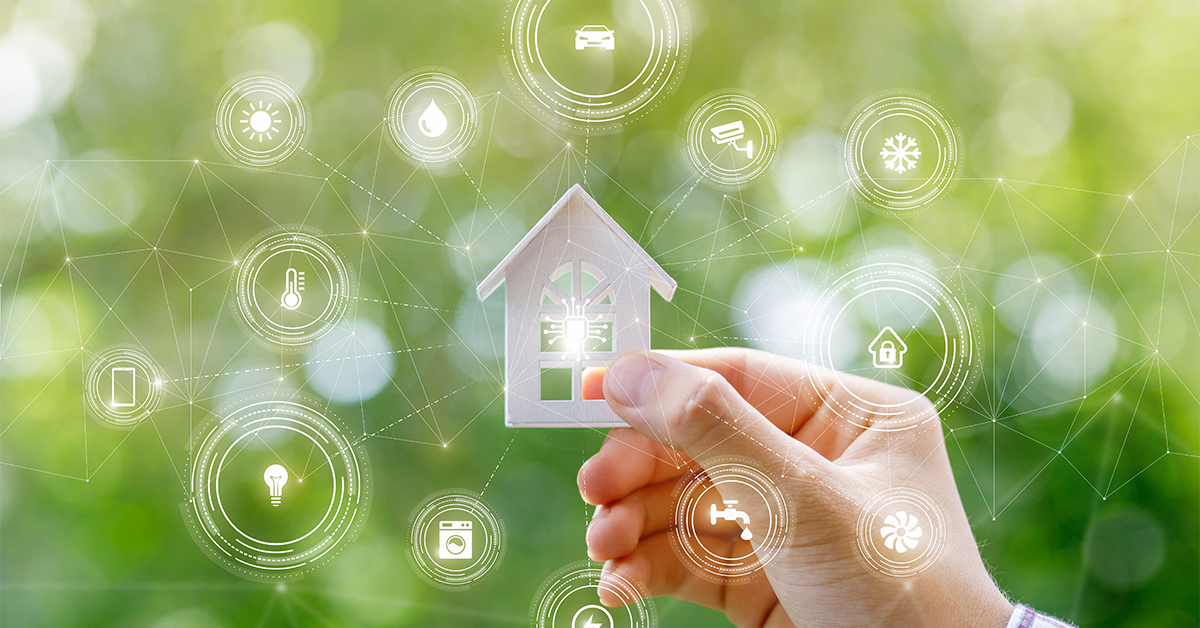Our 2025 Sustainability Report is here! Dive in.
Untapping the Power of a Whole Home Approach to Energy Efficiency
June 27, 2022 •Franklin Energy

A whole-home approach to energy upgrades can offer deep savings benefits, with opportunities to decarbonize and create a comfortable home environment. But for half of the households in the US living with a moderate to low income, the whole-home approach can also uncover deferred maintenance, health, and safety issues that ultimately prevent participation in an energy efficiency program.
According to data from a 2019 American Housing Survey (AHS), approximately 6 million households live in inadequate housing with moderate to severe plumbing, heating, wiring, electrical, or upkeep problems. These problems range from inadequate insulation and heating to broken windows and holes in the roof to the presence of mold. Unfortunately, the residents of these households often earn low to moderate incomes and are unable to afford the repairs they so desperately need.
Discover the products by AM Conservation that best support a whole-home approach to energy efficiency!
Inadequate Housing and Health Impacts
Many households experience health issues related to the quality of their housing. According to ACEEE, low-income families living in unhealthy homes experience disproportionately high rates of chronic diseases such as asthma, heart attacks, stroke, and high blood pressure. But the linkage between weatherization programs and their potential to reduce medical costs is strong. According to the Department of Energy, an evaluation of weatherization programs found “decreased out-of-pocket medical expenses by an average of $514, and provided an average of $14,148 in health and household-related benefits.” That’s a solid indicator that residential energy efficiency programs targeted at improving both energy efficiency and the health and safety of homes should be the first step in achieving residential program goals.
Home Repairs a Barrier to Energy Upgrades
Despite the benefits of addressing home repairs, program rules require that home repairs are corrected before an energy upgrade can be completed, and programs can only fund energy-saving upgrades. This leads to a catch-22 for program administration and participants, with administrators unable to fund repairs and participants unable to afford repairs, locking homes out of energy-saving programs. Due to home repair needs, programs nationwide are unable to serve between 10%-30% of all eligible weatherization projects in low-income households[1]. In an extreme example, the Philadelphia-based weatherization provider Energy Coordinating Agency recently stated they are unable to serve half of all eligible homes.[2]
State and Federal Funding Solutions
Federally elected officials and policymakers are taking steps to address the home repair barrier. The federal infrastructure law enacted by President Biden last year made $3.5 billion in new funding available for federal Weatherization Assistance Program (WAP) and increased by three-fold the amount states will receive from the Department of Energy over the next 5 years. US Senator Jack Reed of Rhode Island introduced the Weatherization Assistance Program Improvements Act which allocates $65 million over 5 years for home repairs needed before weatherization can happen. Furthermore, the DOE is examining potential modifications to the existing WAP program rules to make repair funding available.
After struggling with this issue for years, several states are not waiting for federal action. Connecticut, Minnesota, Pennsylvania, and Wisconsin are advancing legislation and developing creative policy solutions to fund these critical home repairs.
Program Solutions
While funding slowly becomes available to address home repairs, we offer an entire toolkit of solutions ready to maximize program impact by stacking and leveraging funding from multiple sources. Program success is predicated on a streamlined customer experience that provides a one-stop shop to receive income-qualified services and eliminates the traditionally cumbersome paperwork and hoops that means-tested programs can require households to jump through. Franklin Energy has the expertise to navigate these new waters and maximize the impact for income-qualified households by implementing the following:
- Streamline the income qualification process by allowing cross-qualification and eligibility based on participation in an existing means-tested program. Income qualification is often the biggest barrier to program participation.
- Coordinate programs to offer comprehensive services. We can link and coordinate funding sources with existing utility programs, community organizations, and state and local agencies in a way that is seamless for the participant.
- Identify and develop a plan to address health and safety concerns. Our flexible tools and audit programs can collect data on existing home conditions to identify health and safety upgrades during an energy efficiency assessment, and coordinate energy and repair project scopes.
With nearly 3 decades of experience delivering innovative energy management solutions to state energy offices, utilities, municipalities, businesses, and customers across the nation, Franklin Energy has the expertise to implement a variety of residential weatherization and health & safety programs across the country. Contact us to get started.
[1] https://e4thefuture.org/wp-content/uploads/2022/04/E4-EFG_Weatherization-Barriers-Toolkit-4-7-2022.pdf
[2] https://www.npr.org/2022/05/13/1096114029/low-income-energy-efficient-weatherization-program-3-5b-needy

